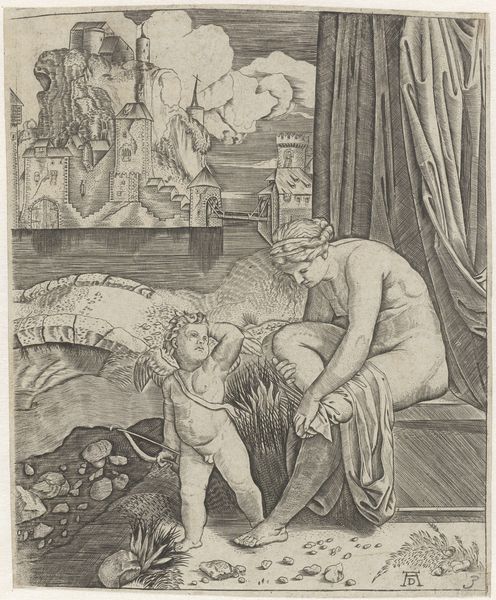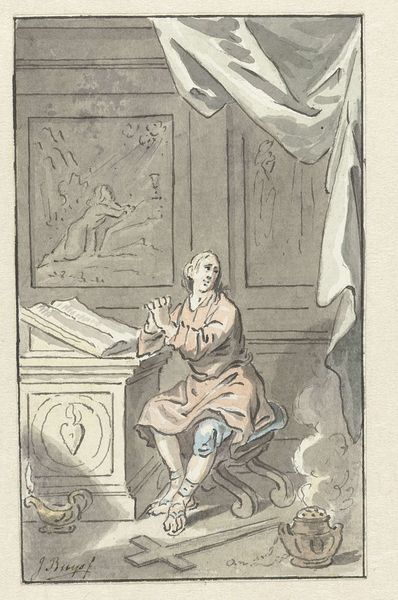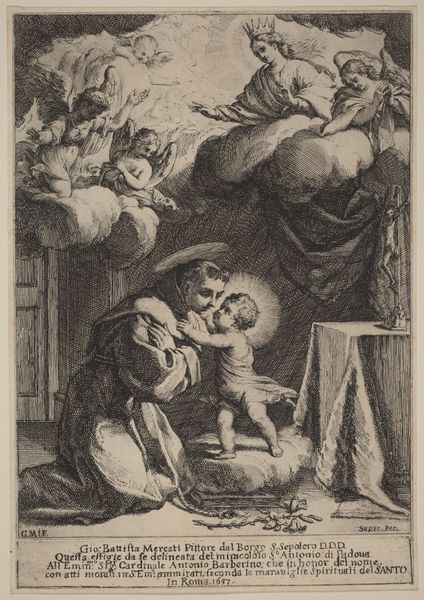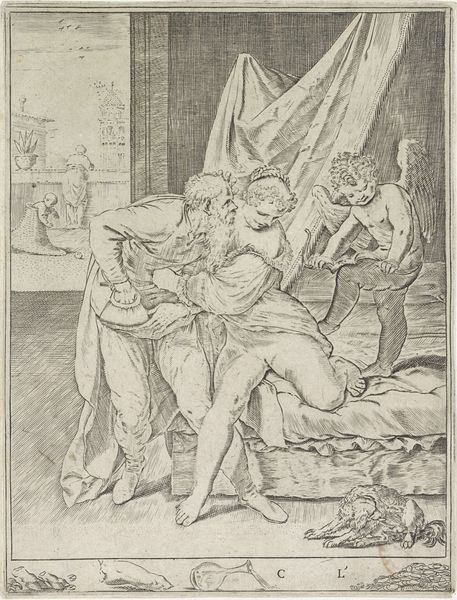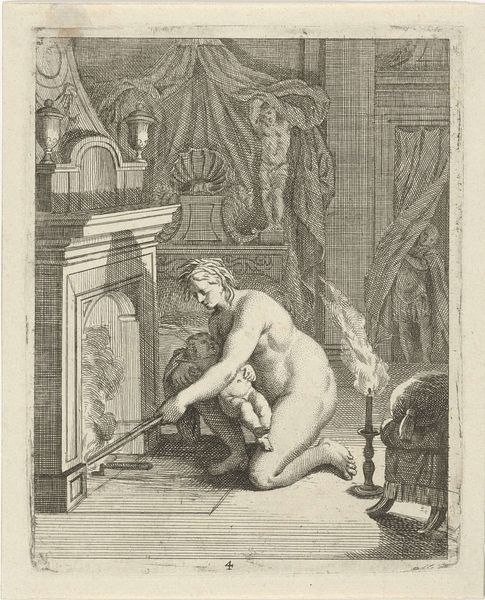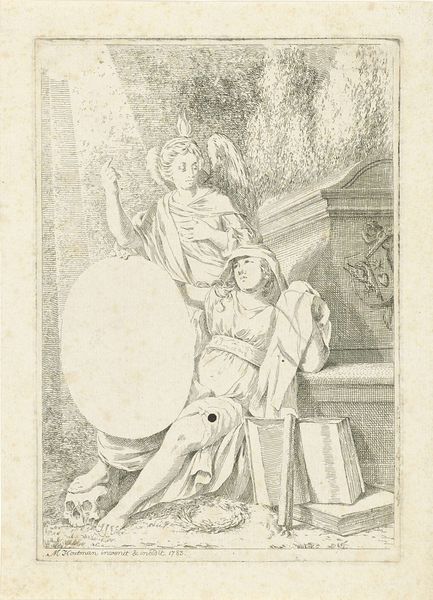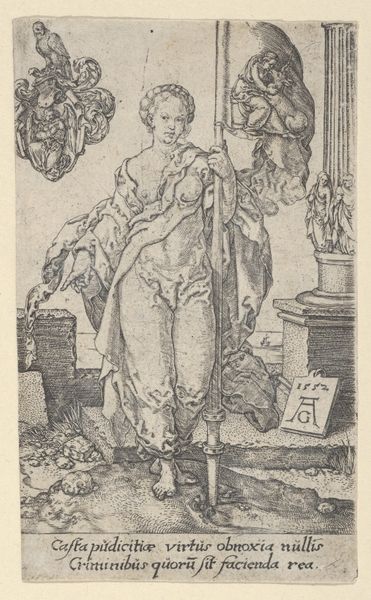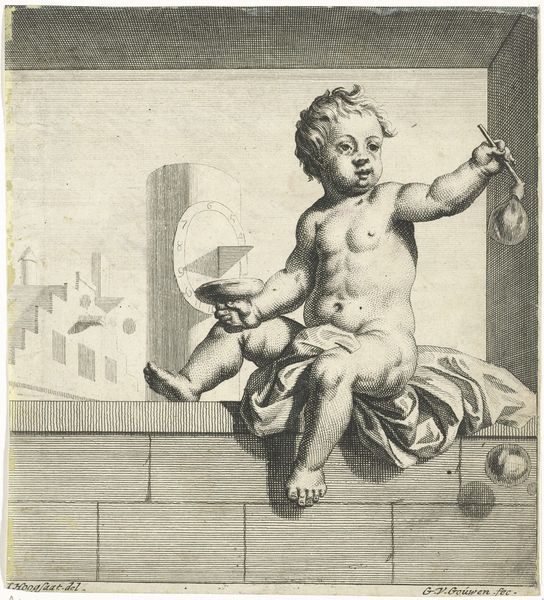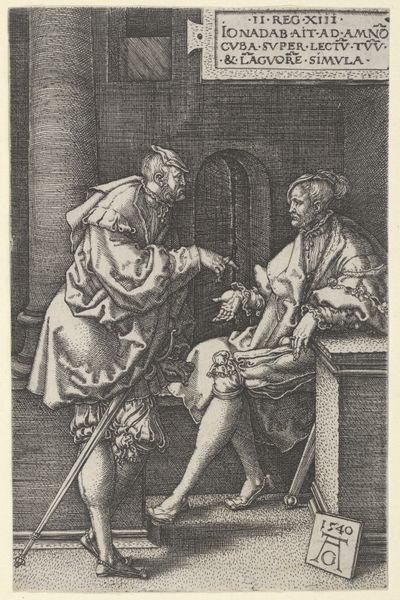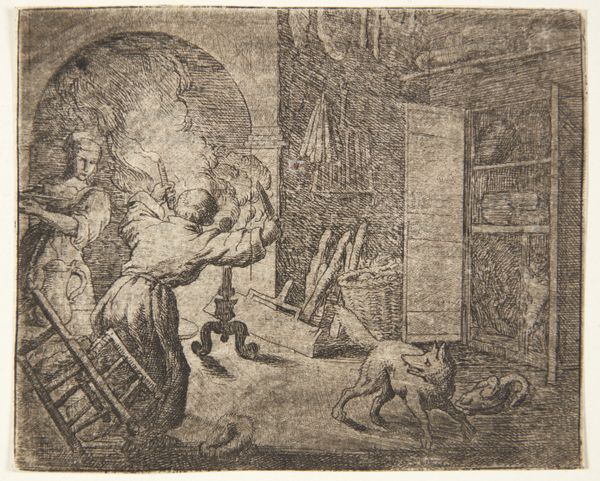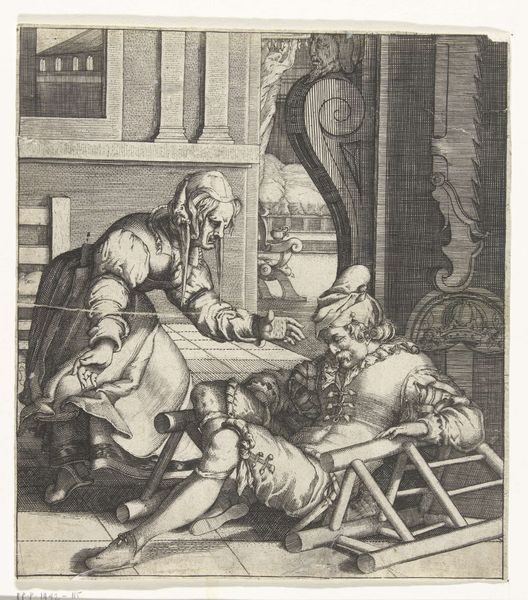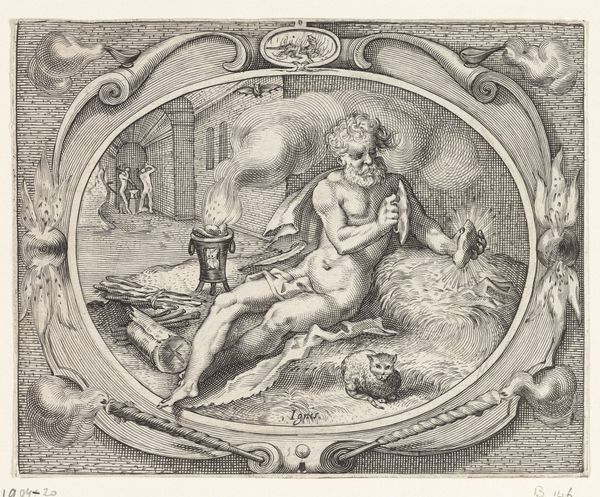
drawing, print, paper, ink
#
drawing
#
allegory
#
baroque
# print
#
pen sketch
#
bird
#
figuration
#
paper
#
ink
#
cupid
#
nude
Dimensions: sheet: 3 9/16 x 3 1/16 in. (9 x 7.7 cm)
Copyright: Public Domain
Curator: Here we have a drawing called "Cupid with a Bird on a String," attributed to Joseph Werner the Younger and estimated to have been created sometime between 1637 and 1710. It is executed in ink on paper. Editor: There's a disquieting stillness to this piece, even with Cupid's animated gesture. The restricted tonal range creates an atmosphere that almost verges on melancholy. Curator: The dynamism in the drawing certainly comes from Cupid's reach toward the bird and the diagonal pull of the string. Note how the Baroque style employs asymmetry and implied movement. Semiotically, we see an allegory here, as Cupid, the god of love, controls the bird. It’s a power dynamic portrayed rather subtly. Editor: It also reflects the socio-political hierarchy in viewing pleasure. The upper classes might have delighted in the suggestion that love, like a pet, could be captured or dominated, which resonates with the power imbalances that were very common in the 17th century. How do you view the staging of this work? Curator: The staging is fascinating. The artist establishes a complex, architecturally defined space, then sets this allegorical action within it. This emphasizes the role of environment in defining identity and influence, both of Cupid and his potential “prey.” But there’s a detachment from realism, with focus placed instead on forms and gestures as a type of visual code. Editor: Right, that detachment speaks volumes, the drawing also provides a perspective on the consumption and display of artworks. Patrons would likely have commissioned or collected pieces like these to demonstrate cultural literacy and refine tastes in a drawing room such as the one presented in this scene. Curator: Absolutely, and viewed through a purely formalist lens, the effectiveness resides in how line, light, and composition merge to evoke emotion through structured artifice. Editor: And on an ending note, to consider these artistic intentions within their historical setting brings depth and reminds us that this drawing is not simply an image but is, in fact, a statement within society and culture. Curator: A statement that's eloquently translated into artistic expression using all its constituent pieces and how the viewer responds to it visually.
Comments
No comments
Be the first to comment and join the conversation on the ultimate creative platform.
